There’s a kind of dessert that doesn’t shout for attention but wins it anyway. That’s what lemon lavender cupcakes do. They’re not dramatic. But they always get asked about. They carry themselves with ease—soft, fragrant, bright.
You’ll learn exactly how to make lemon lavender cupcakes that feel like something you bought at a quiet neighborhood bakery. And you’ll understand how to balance lavender, which is a delicate guest in the kitchen—invited, but never in charge.
If you’ve ever hesitated using floral ingredients, I’ll show you how lemon steps in to keep it grounded. You’ll walk away from this with the know-how to bake something gentle, memorable, and spring-ready. You’ll bake these again—probably for a brunch, a baby shower, or just a quiet Sunday.
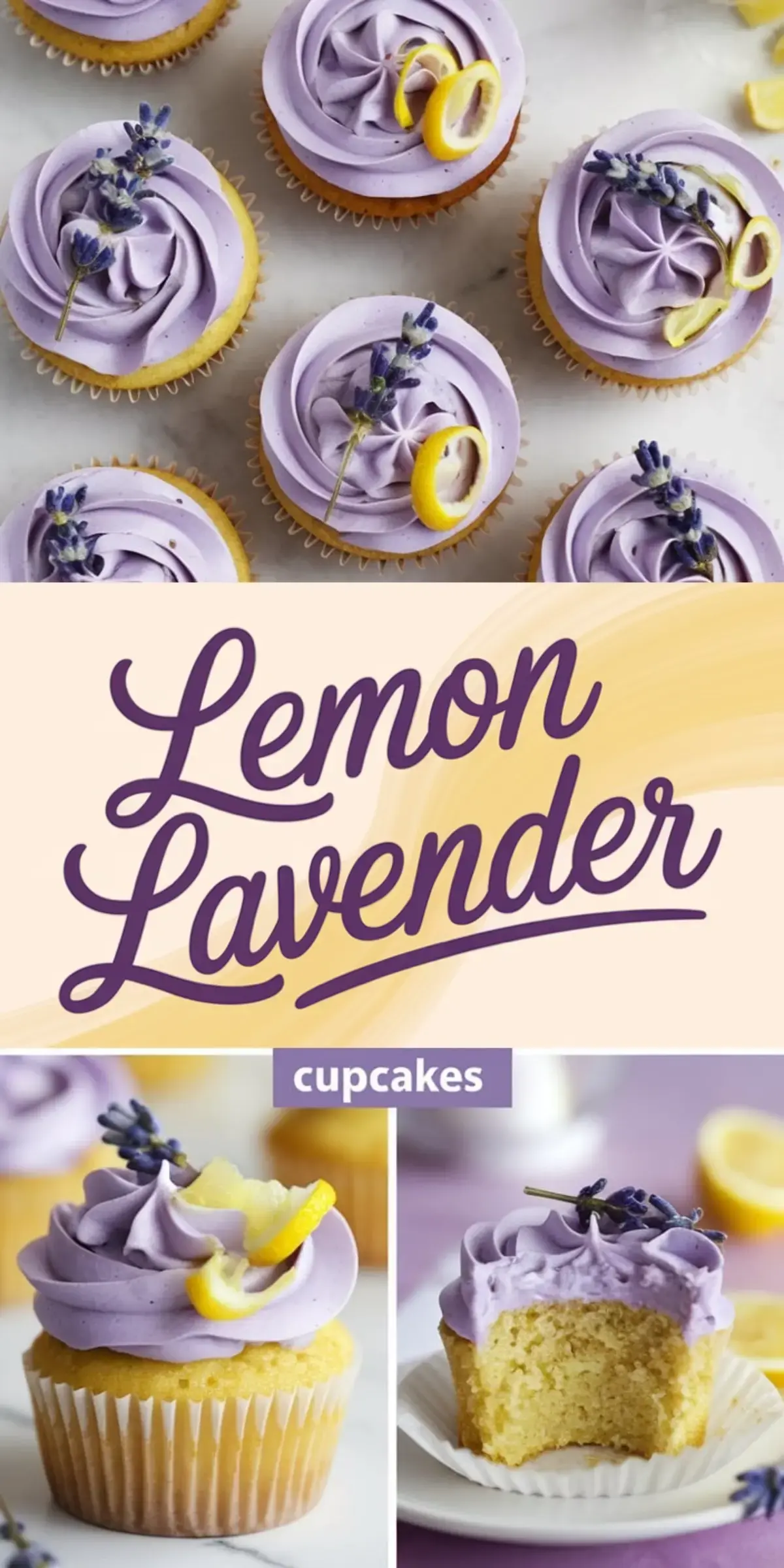
How Lemon and Lavender Work Together in Cupcakes
This batter starts with the usual soft base. Butter and sugar take the lead. Eggs follow, binding everything without making it heavy.
Fresh lemon zest and juice give this batter its structure in flavor. I always zest the lemon straight into the bowl. You don’t want to miss those oils. They’re what make the lemon taste smell like real fruit and not candy.
The lavender comes in quietly. A tablespoon, crushed just enough to release aroma without turning into dust. Add it after everything else has mixed. That way, it stays whole enough to notice but never clumps.
Whole milk gives this cupcake its softness. Not fluffy. Not dense. Just soft. The kind that pulls apart in clean bites.
Why You Need Culinary Lavender and Nothing Else
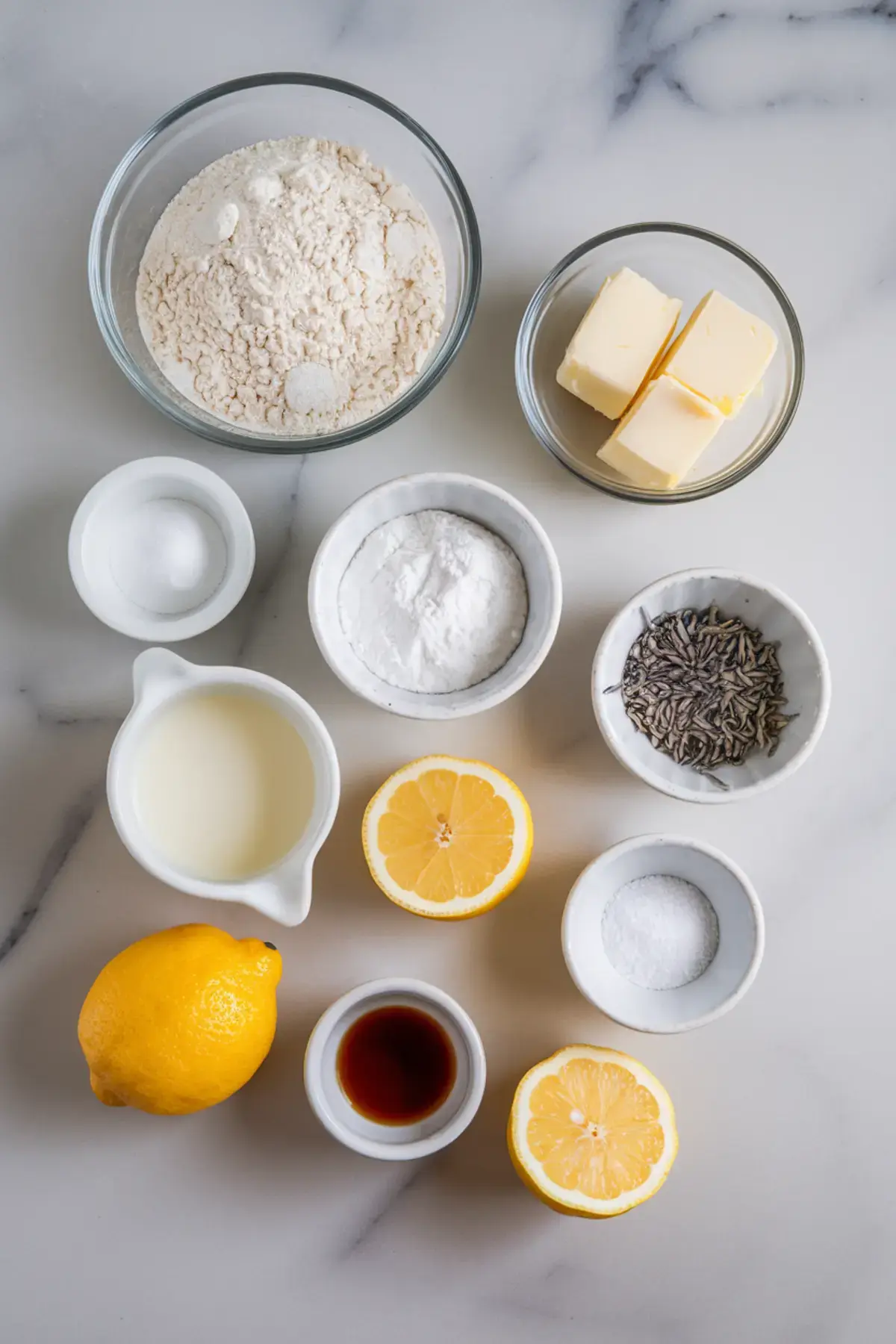
Don’t guess on the lavender. Use culinary-grade only. The kind you’d find from English lavender—not ornamental, not sprayed.
I’ve used lavender that wasn’t culinary once. That batch tasted like soap. You don’t forget that.
Crushing the lavender lightly before folding it in makes a difference. You’re waking it up, not destroying it. And keep it at one tablespoon. A little too much, and everything will taste like hand lotion.
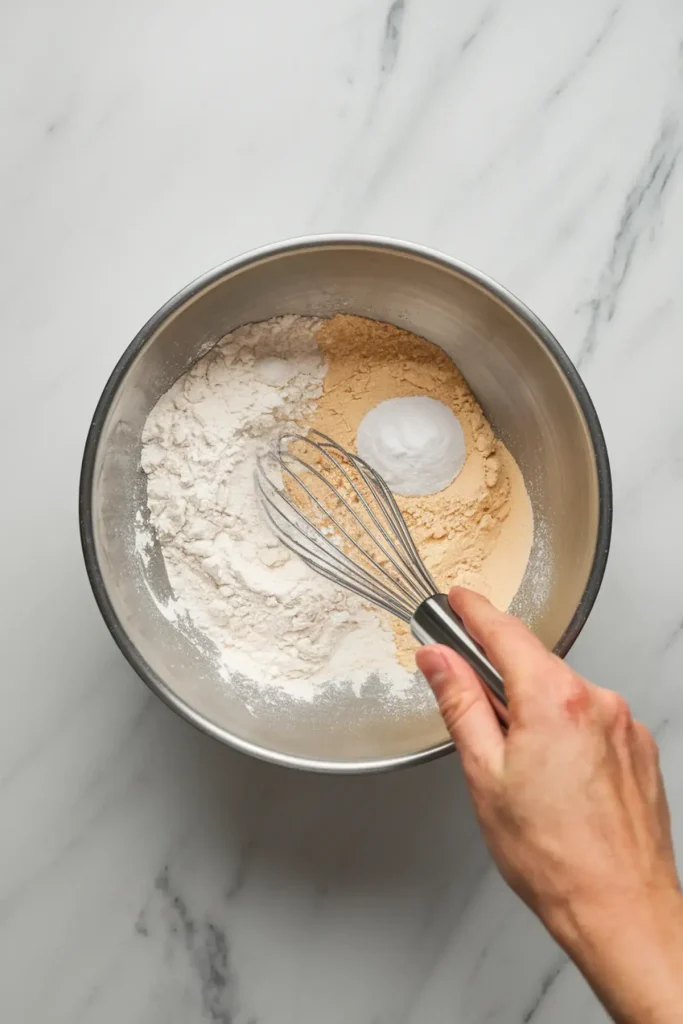
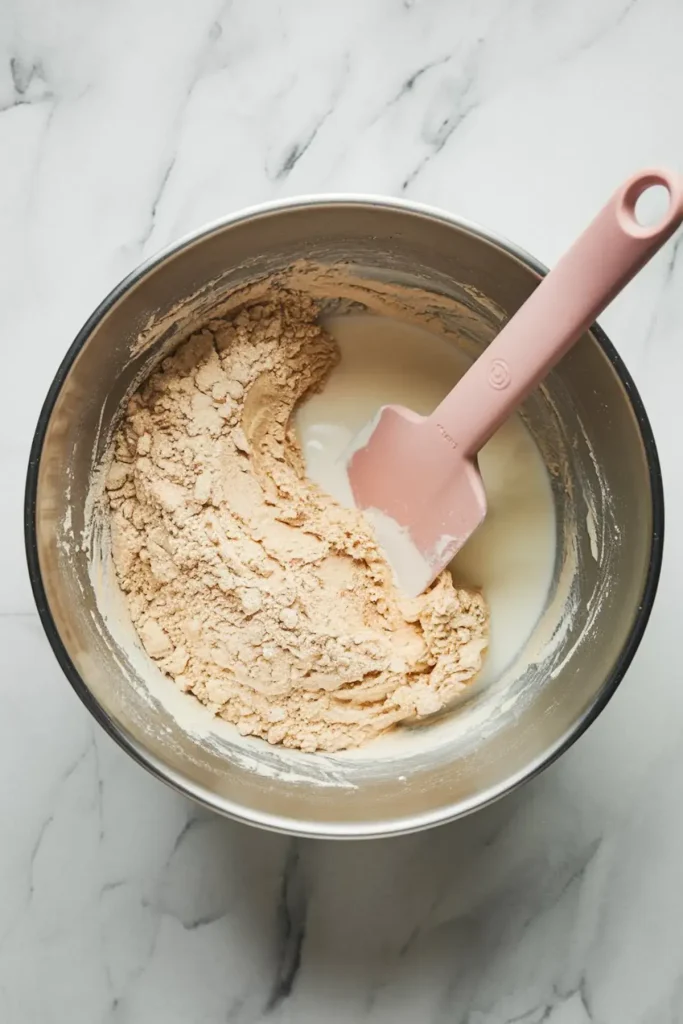
How to Make Lavender Frosting That Doesn’t Overpower
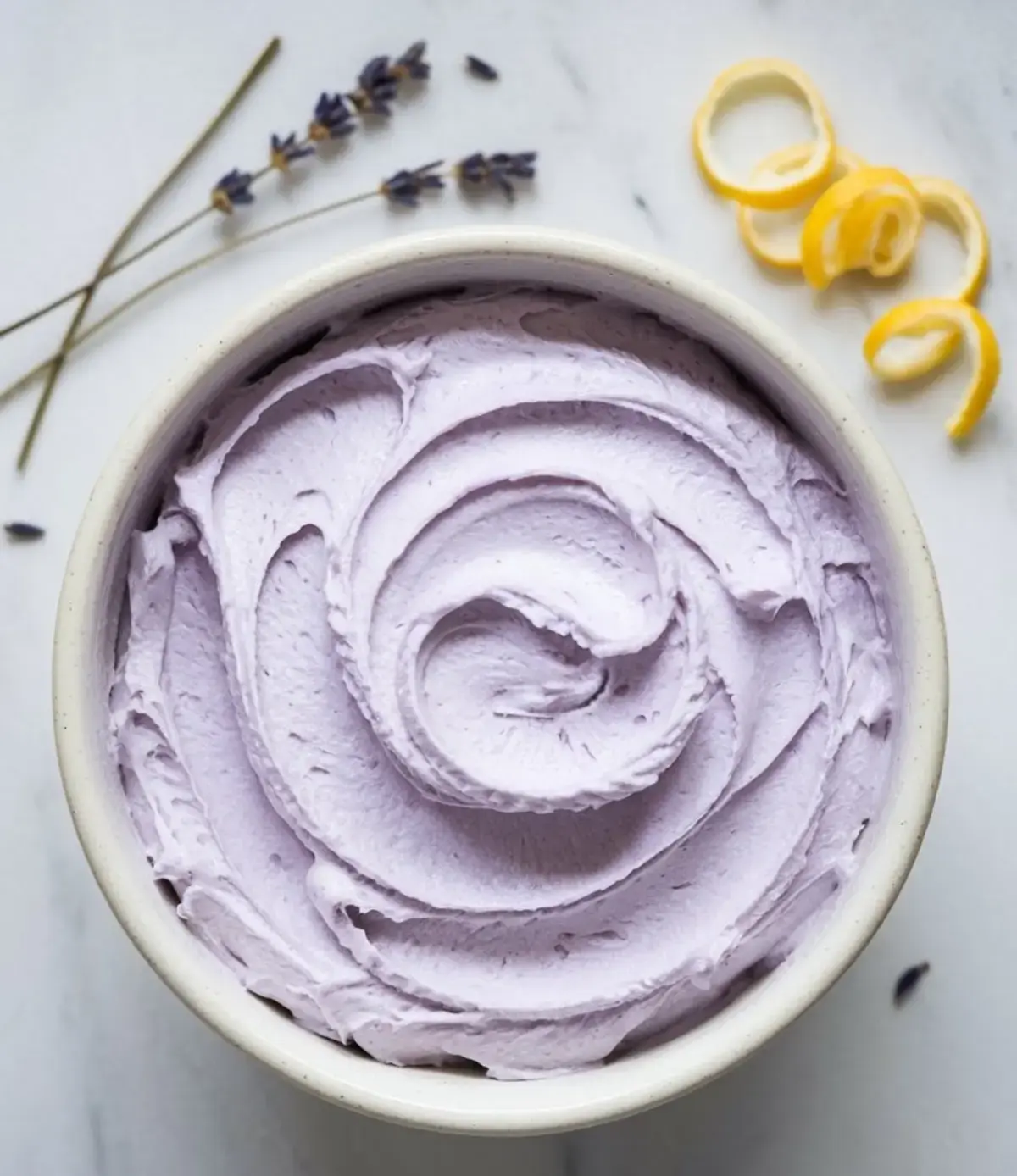
The frosting starts with butter, powdered sugar, and cream. What changes everything is the lavender extract.
Use a half teaspoon. It’s enough.
If you only have lavender syrup, reduce the cream just a bit. You still want a spreadable texture. I’ve made it both ways. The extract gives more control, but syrup works too—especially if you taste as you go.
The food coloring? That’s up to you. I use one drop of gel-based purple. Just enough for a lavender hue. But if you skip it, the flavor stays exactly the same.
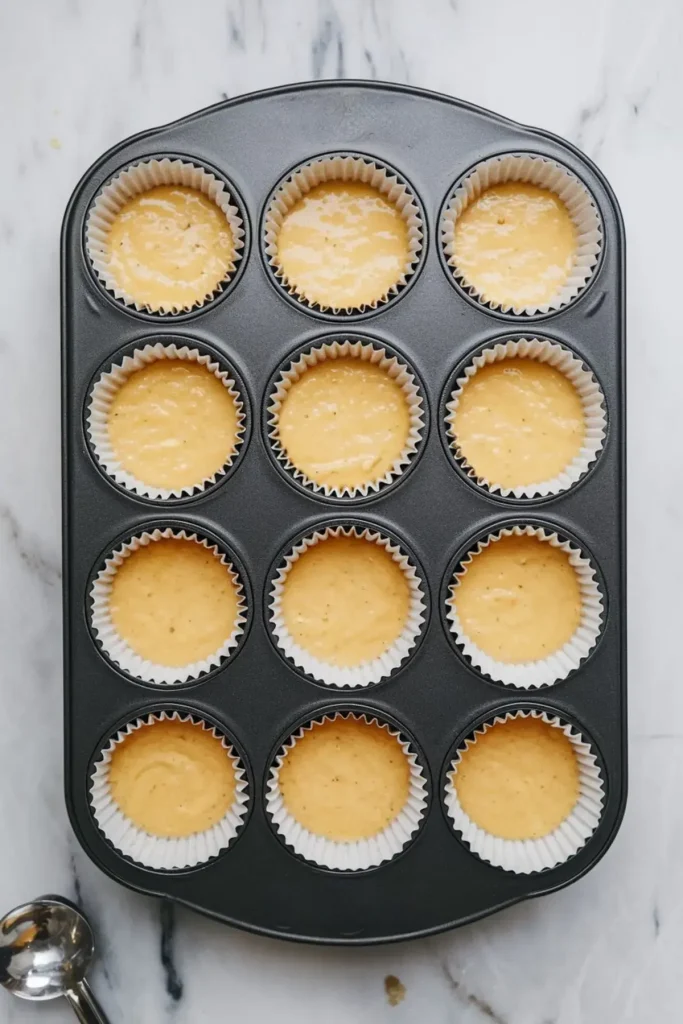

Serving Tips That Make Them Stand Out
I usually serve these within a few hours of frosting. The texture holds best, and the flavor stays balanced. You don’t want these sitting in heat—they soften too quickly.
A few lavender buds on top with a little lemon zest works for garnish. Just a pinch. Any more, and it gets messy. Keep it clean and soft.
These cupcakes do best on simple white plates. Let the pale purple and yellow speak for themselves. That’s always the charm—understated colors and clean lines.
Storage Advice Based on Actual Experience
If I need them for the next day, I store them in an airtight container at room temperature—cool corner of the kitchen, not next to the stove. Two days max like that.
Want to freeze them? Do it after they’re frosted. Place them uncovered in the freezer until the tops firm up. Then wrap them tightly. They’ll hold for a month. Thaw in the fridge, then bring to room temp before eating.
If I know I’ll be short on time, I make the frosting the day before. Let it sit out 20 minutes and whip again before piping. I’ve done this more times than I can count.
Quick Summary Before You Bake
Lemon balances the lavender. It’s bright, clear, and keeps the cupcakes from going too floral.
Use culinary lavender only. Crush it lightly and keep the amount exact.
Go easy on frosting flavor. Lavender is strong in extracts and syrups—taste before adding more.
Serve soon after frosting. Store in a cool place or freeze for future use.
Simple garnish wins. Just a bit of zest and a lavender bud is all you need.
Save and Share This Cupcake Recipe

If you found this helpful, save this to your Pinterest board so it’s easy to come back to the next time you need a spring dessert that isn’t overly sweet.
Tried it? I’d love to hear how yours turned out. Did you adjust the lavender? Did you frost or leave them plain? Drop your thoughts in the comments so we can swap ideas.
More Lemon Dessert Ideas:
Lemon Lavender Cupcakes Recipe
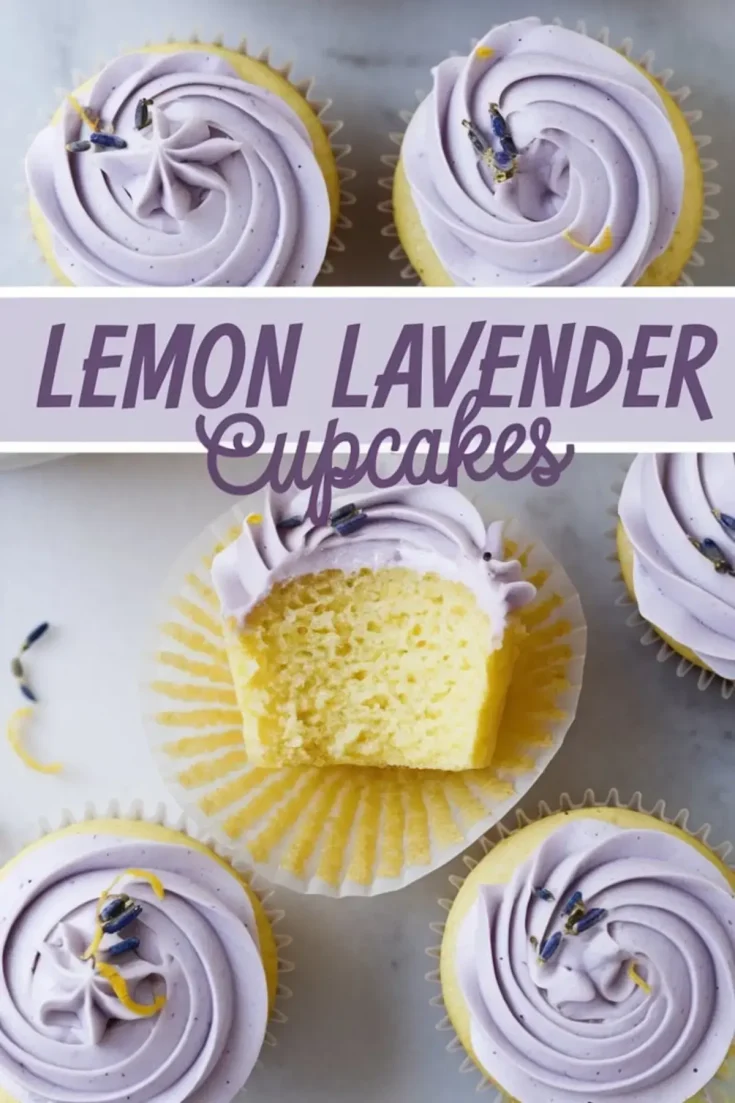
These lemon lavender cupcakes combine bright citrus flavor with subtle floral notes for a spring-inspired treat. The cupcakes are soft and buttery with crushed culinary lavender folded into the batter, and they’re topped with a creamy lavender frosting that’s light, flavorful, and smooth.
Ingredients
- FOR THE CUPCAKES
- 1 ½ cups (190g) all-purpose flour
- 1 ½ tsp baking powder
- ¼ tsp salt
- ½ cup (115g) unsalted butter, room temperature
- ¾ cup (150g) granulated sugar
- 2 large eggs
- 1 tsp pure vanilla extract
- 2 tsp finely grated lemon zest
- 2 tbsp fresh lemon juice
- ½ cup (120ml) whole milk
- 1 tbsp dried culinary lavender (crushed lightly with a mortar and pestle)
- FOR THE LAVENDER FROSTING
- 1 cup (230g) unsalted butter, room temperature
- 3–3 ½ cups (360–420g) powdered sugar
- 2 tbsp heavy cream or milk
- ½ tsp lavender extract (or 1 tsp lavender syrup)
- A drop or two of purple food coloring (optional)
- Lemon zest and dried lavender buds, for garnish
Instructions
- PREHEAT THE OVEN: Set oven to 350°F (175°C) and line a 12-cup muffin tin with paper liners.
- MIX THE DRY INGREDIENTS: In a medium bowl, whisk together the flour, baking powder, and salt. Set aside.
- CREAM BUTTER AND SUGAR: In a large bowl, beat the butter and granulated sugar together until light and fluffy, about 2 to 3 minutes using an electric mixer.
- ADD EGGS AND FLAVORINGS: Beat in the eggs one at a time, mixing well after each. Stir in the vanilla extract, lemon zest, and lemon juice until combined.
- COMBINE BATTER: Add half of the dry ingredients to the wet mixture and mix just until incorporated. Pour in the milk and mix, then add the remaining dry ingredients. Stir until just combined without overmixing.
- FOLD IN LAVENDER: Gently fold in the crushed lavender, making sure it’s evenly distributed throughout the batter.
- FILL CUPCAKE LINERS: Divide the batter evenly among the prepared cupcake liners, filling each about two-thirds full.
- BAKE AND COOL: Bake for 18 to 20 minutes or until a toothpick inserted in the center comes out clean. Remove from the oven and let cupcakes cool completely before frosting.
- MAKE THE FROSTING: In a large bowl, beat the butter until smooth and creamy. Gradually add powdered sugar, ½ cup at a time, mixing on low speed until incorporated.
- ADD FLAVOR AND COLOR: Stir in the cream, lavender extract, and food coloring if using. Increase speed and beat until the frosting is fluffy and smooth, about 2 to 3 minutes.
- ADJUST TEXTURE: If needed, add more powdered sugar for a thicker consistency or more cream for a softer texture. Taste and adjust as desired.
- FROST AND GARNISH: Pipe or spread the frosting onto the cooled cupcakes. Garnish with a sprinkle of lemon zest and a few dried lavender buds before serving.
Notes
Use only culinary-grade dried lavender for baking—other types may be too strong or treated with non-edible substances. Culinary lavender typically comes from English lavender varieties, which have a sweeter, milder flavor. Before adding it to the batter, lightly crush the lavender using a mortar and pestle or your fingers to release its oils and enhance its aroma. Crushing the buds also helps prevent any sharp, herbal texture in the final cupcakes.
To avoid an overpowering floral taste, measure the lavender carefully. One tablespoon is enough to flavor the cupcakes subtly without overwhelming the lemon. If you’re new to baking with lavender, you can reduce the amount slightly the first time to suit your taste preferences.
For the frosting, lavender extract provides a clean, controlled floral flavor. If you can’t find lavender extract, food-grade lavender syrup can be used instead, but reduce the cream slightly to maintain the frosting’s consistency. Be cautious not to overdo the lavender flavor—too much can quickly become soapy.
The food coloring is optional and purely for presentation. A drop or two of gel-based purple food coloring gives the frosting a soft lavender hue that complements the flavor. You can also skip it entirely for a more natural look.
Zesting the lemon directly over the mixing bowl helps capture the citrus oils for maximum flavor. Use a microplane or fine grater, and be careful to avoid the white pith, which is bitter.
These cupcakes are best served the day they’re made but can be stored in an airtight container. If storing at room temperature, keep them in a cool spot for up to 2 days. For longer storage, refrigerate for up to 4 days, bringing them back to room temperature before serving to restore their soft texture.
To make ahead, bake the cupcakes and store them unfrosted. The frosting can be made a day in advance and stored in the refrigerator—just let it sit at room temperature and re-whip before using. The frosted cupcakes also freeze well: freeze them uncovered until the frosting is firm, then wrap tightly and freeze for up to 1 month. Thaw in the refrigerator overnight, then bring to room temperature before serving.
Nutrition Information
Yield
12Serving Size
1Amount Per Serving Calories 193Total Fat 6gSaturated Fat 3gTrans Fat 0gUnsaturated Fat 3gCholesterol 41mgSodium 177mgCarbohydrates 32gFiber 1gSugar 18gProtein 4g

